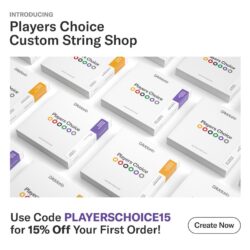
Alex Skolnick Trio Announces New Album ‘Prove You’re Not A Robot’
Brooklyn-based jazz-rock innovators Alex Skolnick Trio (AST) return this fall with PROVE YOU’RE NOT A ROBOT, the group’s sixth LP, arriving November 7, 2025. The album’s first single, a wildly inventive take on Tom Petty’s “Breakdown,” is available today. Listen here.Blending fearless improvisation, genre-defying arrangements, and the virtuosity of its members, PROVE YOU’RE NOT A ROBOT captures AST at the height of their creative powers. The title reflects both a wry nod to our tech-saturated era and a deeper meditation on humanity, direct interaction, and the irreplaceable spark of live musicianship in an age of artificial intelligence.Recorded with a range of vintage and custom instruments — from a Roger Sadowsky archtop to a 1935 Gibson L-00 acoustic — the album spans moods from the uplifting “Guiding Ethos” to the mind-bending Chick Corea/Steve Howe mashup “Armando’s Mood.” Alongside Skolnick’s inventive guitar work, bassist Nathan Peck and drummer Matt Zebroski bring rhythmic complexity and emotional depth, with odd-time signatures and genre twists that have become AST hallmarks.“I feel this album represents my strongest work as a composer,” says Skolnick. “Nathan and Matt really brought their A-game throughout. I think it’s safe to say this is the record we’re all most proud of.”Since forming in the early 2000s, AST has reimagined the jazz guitar trio, melding influences as far-reaching as Wes Montgomery, Black Sabbath, Prince, tango, calypso, and Western swing. Known for their adventurous covers of rock and metal classics, they’ve earned praise from outlets like Billboard, Downbeat, Jazziz, The Village Voice, and NPR, and have toured internationally, captivating audiences from Norway’s Larvik Guitar Festival to Paris’s The Olympia and New York’s Radio City Music Hall.PROVE YOU’RE NOT A ROBOT promises to be a bold addition to the AST legacy — as engaging for jazz aficionados as it is for rock fans curious about the inventive, genre-bending journey of Testament original guitarist Alex Skolnick.Album Release Date: November 7, 2025First Single “Breakdown” Release Date: September 12, 2025PROVE YOU’RE NOT A ROBOT TracklistParallel UniverseArmondo’s MoodInfinite HotelProve You’re Not A RobotGuiding EthosBreakdownThe Polish GoodbyeAsking For A FriendAST on TourSeptember 30 – New York, NY, The Cutting Room (Album launch party)November 15 – Montreal, QB, Piranha BarNovember 16 – Ottawa, ON, Brass MonkeyNovember 17 – Pittsburgh, PA. City WineryNovember 19 – Detroit, MI, Token LoungeNovember 20 – Chicago, IL. Reggie’sNovember 21 – Cleveland, OH, Irishtown Bend Tap RoomNovember 22 – Buffalo, NY, Nietzsche’sNovember 23 – Anniville, PA, The Allen Theatre2026January 8 – The Woodlands, TX, Dosey DoeJanuary 9 – McKinney, TX, Guitar SanctuaryJanuary 11 – San Antonio, TX, Fitzgerald’sJanuary 13 – Los Angeles, CA, Baked PotatoJanuary 14 – Sacramento, CA, Harlow’sJanuary 15 – Seattle, WA, FunhouseJanuary 16 – Portland, OR, Jack London RevueJanuary 17 – Redding, CA, The DipJanuary 18 – Mill Valley, CA, Sweetwater Music Hall Alex Skolnick Trio is:Alex Skolnick – GuitarMatt Zebroski – DrumsNathan Peck – Bass
Read more »
Full Album Stream: Firmament –For Centuries Alive
German trad metal bashers Firmament spin their classy tales of power and glory on second full-length For Centuries Alive.
The post Full Album Stream: Firmament –For Centuries Alive appeared first on Decibel Magazine.

D’Addario Launches Players Choice Custom String Shop
D’Addario announces the launch of the Players Choice Custom String Shop, a new online tool that lets players design their own string sets, all backed by D’Addario’s long-standing quality and craftsmanship. Available exclusively on daddario.com, the platform allows players to select their instrument of choice and then choose from the most popular gauges and alloys across electric and acoustic guitar strings. Even better, no minimum order is required. Custom sets can be saved to a Players Circle profile for fast reorders, and every purchase you make in the Custom String Shop earns Players Circle rewards points. From the Visionary Behind D’Addario “Musicians looking for their ‘perfect string set’ need an intuitive way to experiment on screen and find the perfect combination of gauges and alloys to satisfy their requirements,” said legendary founder Jim D’Addario.“We created the Players Choice Custom String Shop to satisfy everyone’s customization needs.”Availability & PricingPlayers Choice Custom String Shop is available in the USA, Canada, and Europe, where Players Circle is available. Prices start at $10.30 for electric sets and $11.70 for acoustic sets.Key Highlights Build custom sets for electric and acoustic guitars now, with support for more instruments coming in the future Choose from our most popular gauges and alloys, including the lightest and heaviest gauges, and even half gauges Design sets for standard 6- and 12-string guitars, as well as extended-range 7-, 8-, and 9-string guitars Choose from our most popular strings, including industry-standard XL, Chromes, and Phosphor Bronze strings. Or upgrade to premium NYXL and XS coated options Name your set, printed right on the label No minimum order quantity Save, reorder, and earn Players Circle rewards Learn more! www.daddario.com/custom-strings
Read more »
Guitarist Mike Scott Tells Us All the Prince Stories | 100 Guitarists Podcast
Hit-making guitarist Mike Scott—who’s worked with everyone from Justin Timberlake to Janet Jackson—showed up in Minneapolis from his hometown of D.C. and started snatching everyone’s gigs. Soon, he ended up at Paisley Park, jamming with the man himself and joining his band, New Power Generation. This masterful storyteller joins 100 Guitarists to talk all things Prince, cracking us up along the way with firsthand recollections of playing onstage and in the studio, the only time he played the “Purple Rain” solo live, and some insight on Prince and his gear. Thanks to our sponsor EMGLEARN MORE! emgpickups.com
Read more »
Jared James Nichols: How I Use Drop D Tuning | Learn Hard Wired
For tabs: https://www.guitarworld.com/lessons/artist-lessons/jared-james-nichols-hard-wired In this lesson, Jared James Nichols goes over the namesake song of his GW lesson column, “Hard Wired,” which appears on his 2023 self-titled album. It’s played…
Read more »
Electro-Harmonix Releases the Pico Swello Attack Envelope
Electro-Harmonix is excited to introduce the Pico Swello Attack Envelope pedal. Inspired by the legendary POG2 ATTACK slider, the core effect of the Swello is a polyphonic attack filter which applies individual volume swells to each note you played, even within chords and through sustained arpeggios. This unique effect is paired with an adjustable Low Pass Filter for smooth swells and envelope filter-style effects.Housed in EHX’s Pico-sized chassis, the Swello has a simple four knob/one button layout. VOL adjusts the overall output of the pedal while ATTACK sets the attack envelope time. Low ATTACK settings attenuate just the initial attack of your instrument, while higher settings offer epic, long note swells. The Low Pass Filter is controlled by the FILTER button as well as the FREQ and MOD knobs. FILTER engages the LPF and applies an adjustable high or low resonance setting. The FREQ knob sets the cutoff frequency of the LPF and the MOD knob controls the depth and direction of the filter modulation akin to an envelope filter. Turn MOD up from noon for an upward filter sweep or down from noon for a downward filter sweep.The EHX Pico Swello comes equipped with a standard EHX 9 Volt power supply. It will be available Mid-September and features a U.S. Street Price of $149.50.
Read more »
New Michael Schenker Group Album “Don’t Sell Your Soul,” Out Oct. 3
What was already a standout moment of this year’s Wacken Open Air, the world’s largest metal festival, turned into something even bigger when legendary guitarist Michael Schenker pulled a surprise no one saw coming. The architect of hard rock used the world’s loudest stage to announce that a brand new Michael Schenker Group studio album, titled Don’t Sell Your Soul, will be released on October 3 via earMUSIC.To mark the occasion, Schenker and his band closed the show with a world-exclusive live premiere of the new album’s title track — a powerful encore that took the Wacken crowd by surprise and was met with instant enthusiasm on the muddy festival fields. You can now listen to the new track HERE.
Don’t Sell Your Soul is the second part of an album trilogy that began with 2024’s My Years With UFO. This will be the first studio album for MSG since Universal in 2022.The album was produced by Michael Schenker and Michael Voss, and recorded with Schenker’s longtime allies: Bodo Schopf (drums), Barend Courbois (bass), and Steve Mann (guitar, keys). On vocals: the impeccable Erik Grönwall (Skid Row, H.E.A.T) – undoubtedly one of the finest rock voices of his generation. Guest appearances on vocals by Robin McAuley, Dimitri “Lia” Liapakis, and Michael Voss round out the cast.The Michael Schenker Group was formed in 1979 and has released 12 studio albums with many different members over the years, with Schenker the only constant presence.Michael Schenker played in the rock band UFO and leads the Michael Schenker Group (MSG). He was an early member of the hard rock band Scorpions, a band co-founded by his elder brother Rudolf Schenker.Michael Schenker is regarded as one of the most influential guitarists of the 1970s, and is widely known as a legendary figure in the history of metal guitar.Michael Schenker is an undisputed living legend and it is time to sell your soul with MSG. Let us know what you think! Michael IS doing a limited amount of interviews so let’s talk and see what we can set up!

Wah-Wah 101
If you ask me what my favorite pedal is after fuzz, the answer is definitely wah. Bands like Fu Manchu and Dinosaur Jr. are great examples of just how powerful wah, fuzz, and a wall of amps can sound together. Sorry, I’m not into SRV voodoo or those “whacka-whacka” kinds of wah sounds. Let’s dig a little deeper. My very first wah pedal was actually a gift from my ex-girlfriend. She told me it sounded “sexy.” She knew absolutely nothing about guitars. Maybe the sound reminded her of some sleazy ’70s B-movie soundtrack. That pedal was a Dunlop GCB95 with a red Fasel inductor. I absolutely loved it … at first. I even took it out on tour. But I grew to hate it. It was heavy, hard to click on, had no on/off LED, and it sucked tone like crazy. But still, it was the pedal that made me fall in love with wah and start digging deep into its history.Wah is one of the most iconic effects pedals—so iconic that even non-guitarists recognize it instantly by sound alone. Hence the name—wah. The effect was first developed around 1964 by the Thomas Organ Company, an American distributor of Vox products from the U.K. Their goal? Originally, it was intended for use with Vox organs, to mimic a trumpet-like tone. Bradley J. Plunkett, a junior engineer at Thomas, modified a midrange booster circuit and eventually decided to use a potentiometer as a frequency control. The result was essentially a variable band-pass filter, initially released as the Clyde McCoy Wah-Wah. McCoy was a trumpet player, and that product was intended to achieve a muted-trumpet effect with guitar. In 1967, to better appeal to guitarists, the name was changed to the Cry Baby, although in Italy Vox branded the device as the V846 Wah-Wah—and the rest is history.As the music industry evolved, so did the wah pedal. Both the sound and the mechanism used to operate wah pedals went through significant changes. The original Vox V846 used a variable band-pass filter housed in an organ volume pedal enclosure, where the potentiometer was turned via a gear. This allowed players to control the frequency range with a rocking foot motion. This design is still used today by many manufacturers.However, that system has its drawbacks. Over time, the gears wear out due to friction. Then, there’s the issue of limited sweep range: most rotary pots have about 270 degrees of rotation, but gear mechanisms often only utilize about a third of that, making them far from optimal. In 1977, Ernie Ball replaced the gear mechanism with a string-loop-and-spring design, allowing for a full and smooth sweep. Roland and Boss also introduced unique approaches, including automotive-like axle designs and pedal mechanisms inspired by bicycle cranks—equally effective and efficient. Morley, meanwhile, took a more futuristic approach by employing optical sensors to control the sweep, with no moving interior parts at all.“Perhaps due to their legacy tones, many players enjoy the limitations of the original design.”Despite these innovations, no single mechanism has rendered the others obsolete. In the end, it’s up to the musician—the user—to decide which design works best for their playing style and live performance needs. I find myself more comfortable with devices like the one from Ernie Ball, simply because they include an LED indicator. I also really love the Dunlop Bass Wah—essentially a manual envelope filter—which I think is genius.That said, the classic gear-style wah pedals still have their loyal fans. Perhaps due to their legacy tones, many players enjoy the limitations of the original design. I still believe the lack of an on/off LED indicator is the biggest flaw in traditional wahs like the Cry Baby or Vox models.Maybe I’m just one of those people with unorthodox tastes and needs. I don’t claim to be special or different, but wah pedals are tools for making music, and music-making is by nature a subjective process. And that’s totally okay, right?In fact, I’m sure many of the innovations we’ve seen in wah pedal design come from the designers’ own subjectivity—trying to solve real problems they perceive in real contexts. As long as people are passionate about making music, new ideas will keep emerging. Weird, wonderful, and always evolving—that’s wah.
Read more »
Bass Legends’ Pedalboards: Justin Chancellor, Tim Commerford, MonoNeon and more!
Re-live classic Rig Rundowns from Tool’s Justin Chancellor, Pantera’s Rex Brown, Tim Commerford (RATM/Prophets of Rage), MonoNeon (Prince), and other road-tested pros as they reveal the routing, wah/whammy tricks, delay math, and looping workflows that truly hold up onstage.Watch the FULL Rig Rundowns: Tool’s Justin Chancellor: https://www.youtube.com/watch?v=OlbvMpq4C64 Pantera’s Rex Brown: https://www.youtube.com/watch?v=GYPG6SQlupQ Donny Benet: https://youtu.be/WHR5aPTYs4E MonoNeon: https://youtu.be/fjHgrc06Ov8 Blu DeTiger: https://youtu.be/gVLSMnVID4Q Tim Commerford: https://www.youtube.com/watch?v=JsgUqLdgQ1U El Ten Eleven: https://youtu.be/3wpkBijUkok Brought to you by D’Addario: https://ddar.io/wykyk-rr
Join D’Addario’s Players Circle for free today to start earning points toward free gear: https://ddar.io/pc-rr

Sue Foley: The Genius of Piedmont Picking and Elizabeth Cotten
For tabs: http://www.guitarworld.com/lessons/artist-lessons/sue-foley-teaches-elizabeth-cotten-piedmont-fingerstyle-blues On her latest album, One Guitar Woman, Sue Foley pays tribute to the female pioneers of the guitar, all of whom are among the biggest influences on…
Read more »